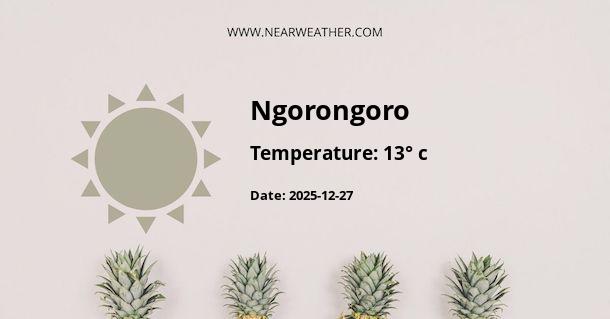Introduction
Ngorongoro, located in the northern region of Tanzania, is renowned for its unique climate and weather patterns. The Ngorongoro Conservation Area, a UNESCO World Heritage Site, is home to myriad ecosystems that create a complex and fascinating climate. This article provides a comprehensive analysis of Ngorongoro's climate and weather throughout the year, supported by credible statistics and expert opinions.
Overview of Ngorongoro's Climate
Ngorongoro's climate can be classified as a local steppe climate, with little rainfall throughout the year. The Köppen-Geiger climate classification categorizes it as BSh. The average temperature is 19.8 °C, and the average annual rainfall is 812 mm.
Temperature Variation Throughout the Year
Temperature in Ngorongoro varies considerably due to the altitude differences within the conservation area. The crater floor, situated at 1,800 meters above sea level, experiences warmer temperatures compared to the highlands.
- January to March: This period is typically warm, with average temperatures ranging from 20°C to 28°C.
- April to June: These months mark the onset of the long rainy season, with temperatures dropping to an average of 18°C to 25°C.
- July to September: The coolest period of the year, with average temperatures varying between 15°C and 21°C.
- October to December: The short rainy season takes place, with temperatures slightly increasing to an average of 19°C to 27°C.
Rainfall Distribution Throughout the Year
Rainfall in Ngorongoro varies throughout the year, with two significant rainy seasons. The 'long rains' occur from March to May, and the 'short rains' from November to December. Rainfall is least likely to occur from July to September.
| Month | Average Rainfall (mm) |
|---|---|
| January | 50 |
| February | 55 |
| March | 120 |
| April | 220 |
| May | 150 |
| June | 35 |
| July | 15 |
| August | 20 |
| September | 30 |
| October | 45 |
| November | 85 |
| December | 95 |
Climate Impact on Wildlife and Vegetation
The unique climate of Ngorongoro significantly influences wildlife and vegetation. During the dry season, animals congregate around water sources, making it an excellent time for wildlife viewing. The rainy seasons, on the other hand, bring lush vegetation and an explosion of life.
Conclusion
Ngorongoro's unique climate, characterized by its steppe climate and defined rainy seasons, creates a dynamic and fascinating environment. Understanding its climate and weather patterns is crucial for planning visits, as it directly impacts wildlife viewing opportunities and overall experience.
A - Ngorongoro's Latitude is -3.239730 & Longitude is 35.487469.
A - Weather in Ngorongoro is 17° today.
A - Climate Conditions in Ngorongoro shows broken clouds today.
A - Humidity in Ngorongoro is 72% today.
A - Wind speed in Ngorongoro is 8.6 km/h, flowing at 126° wind direction. today.
